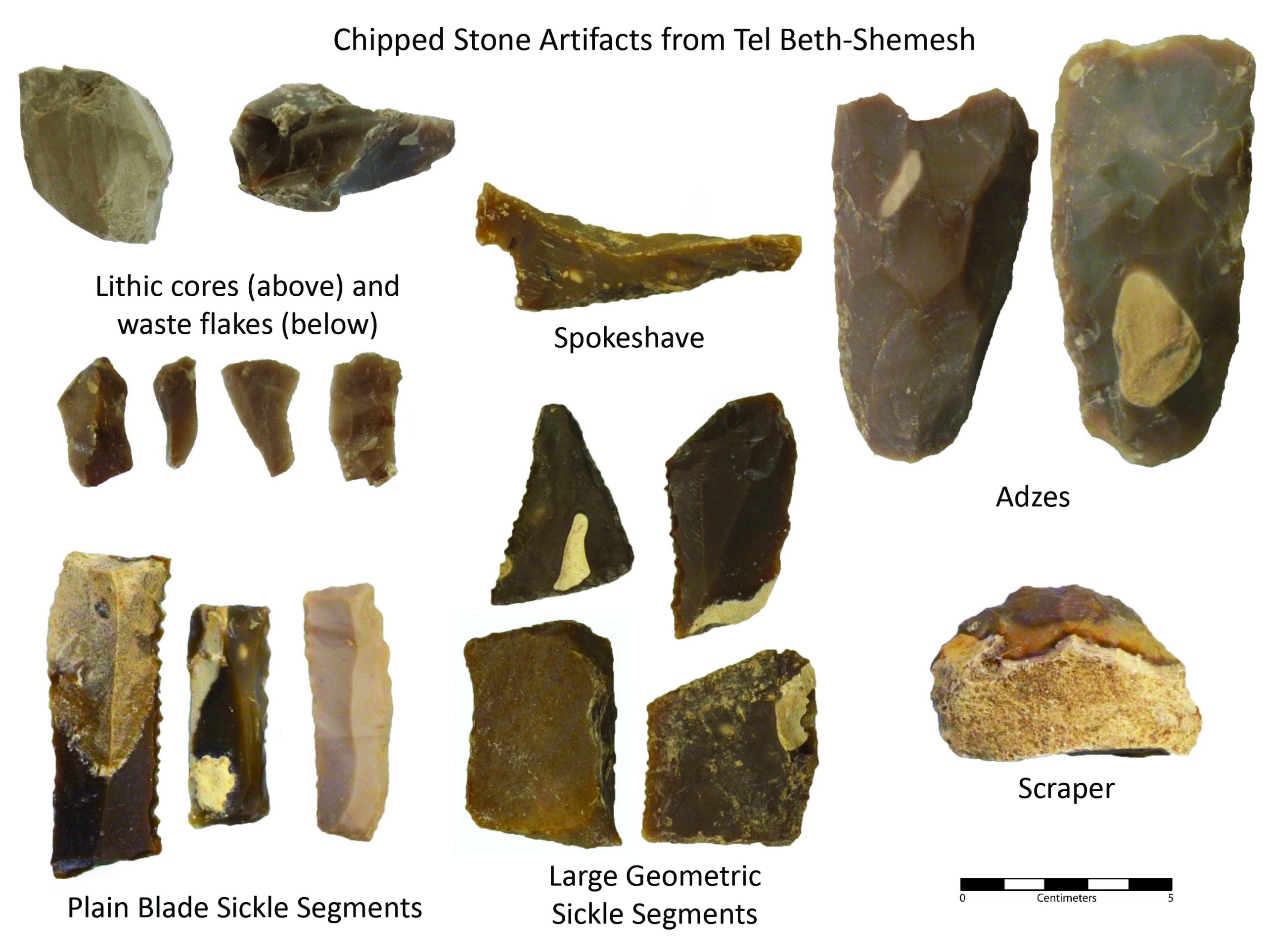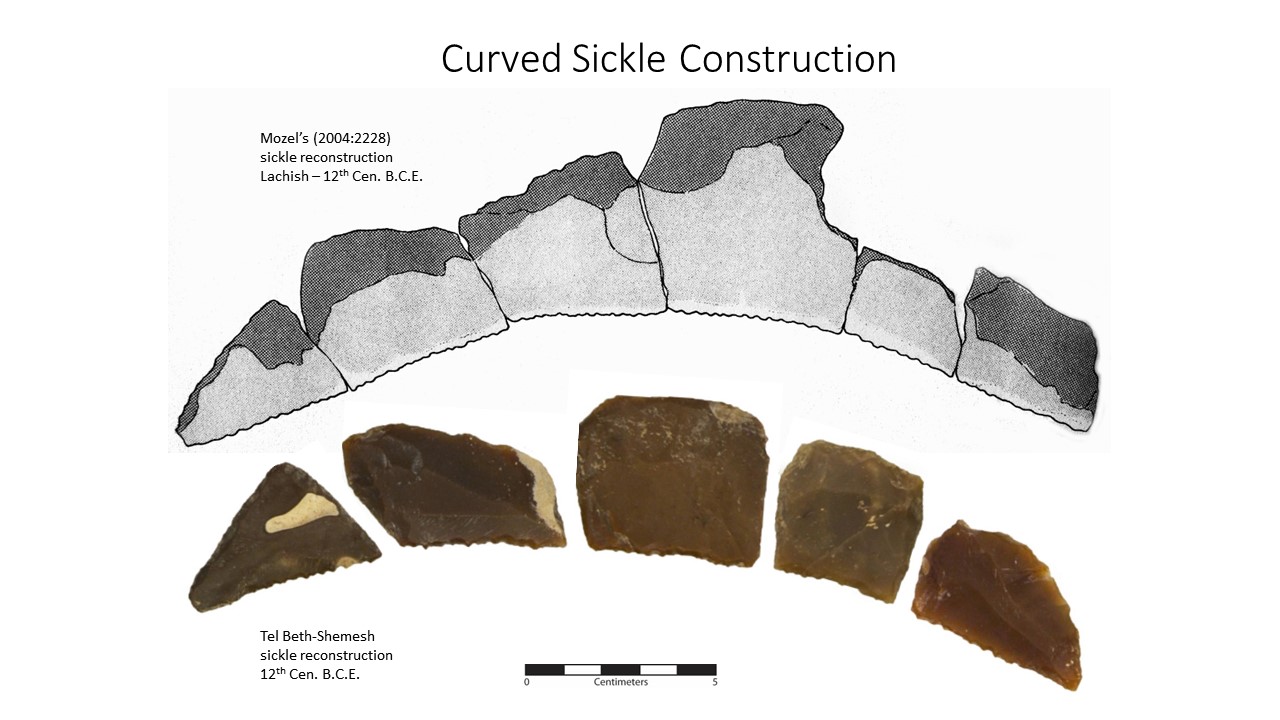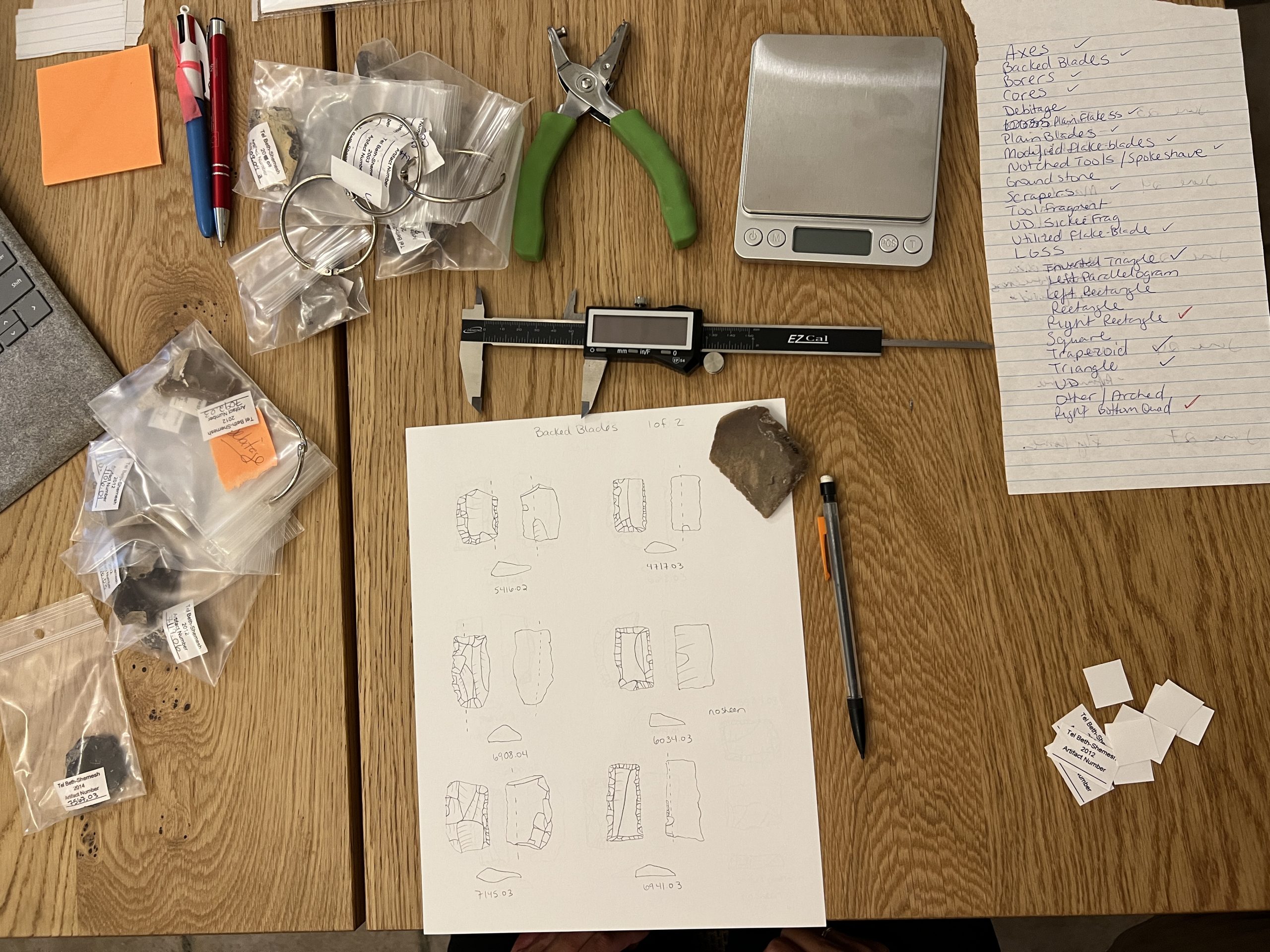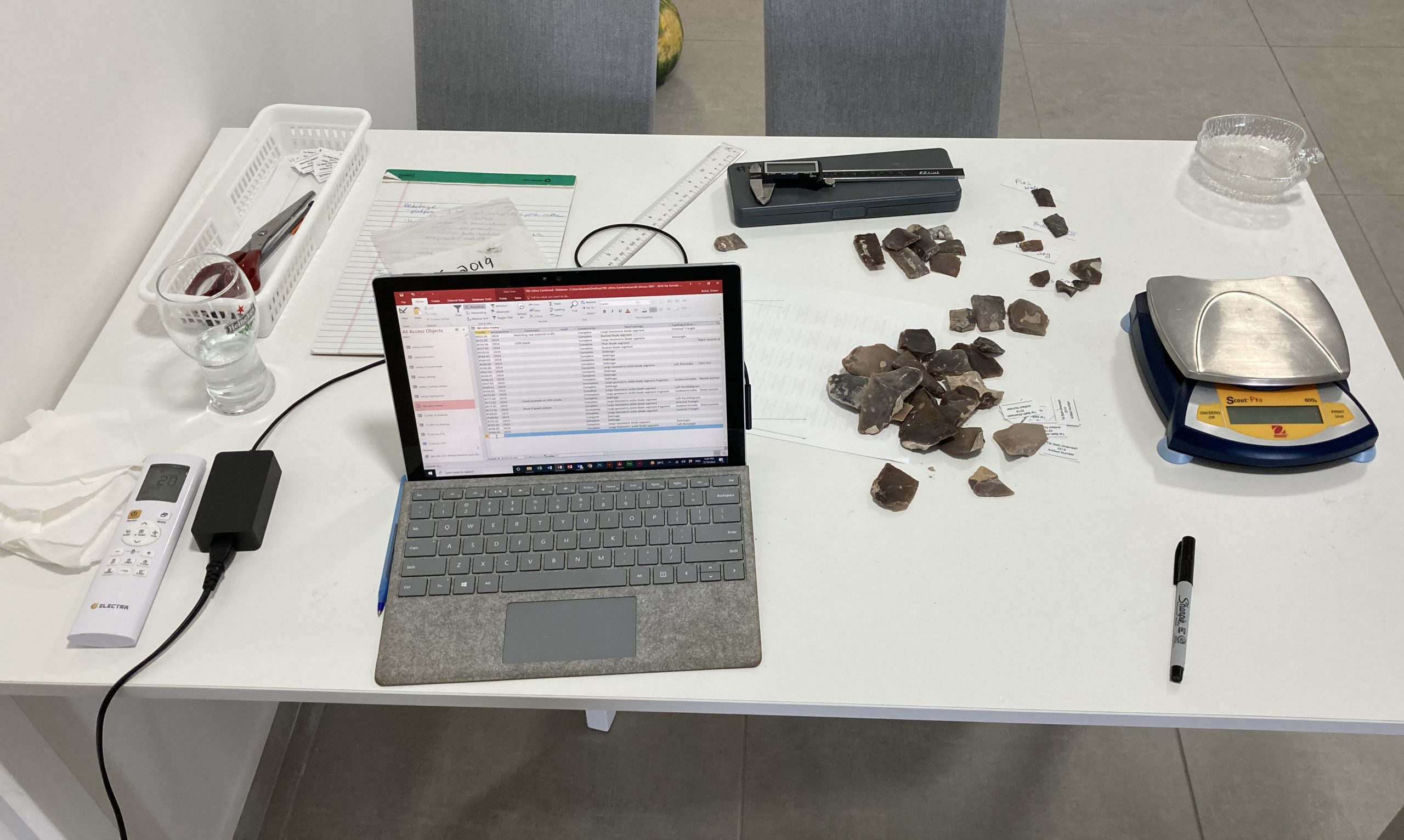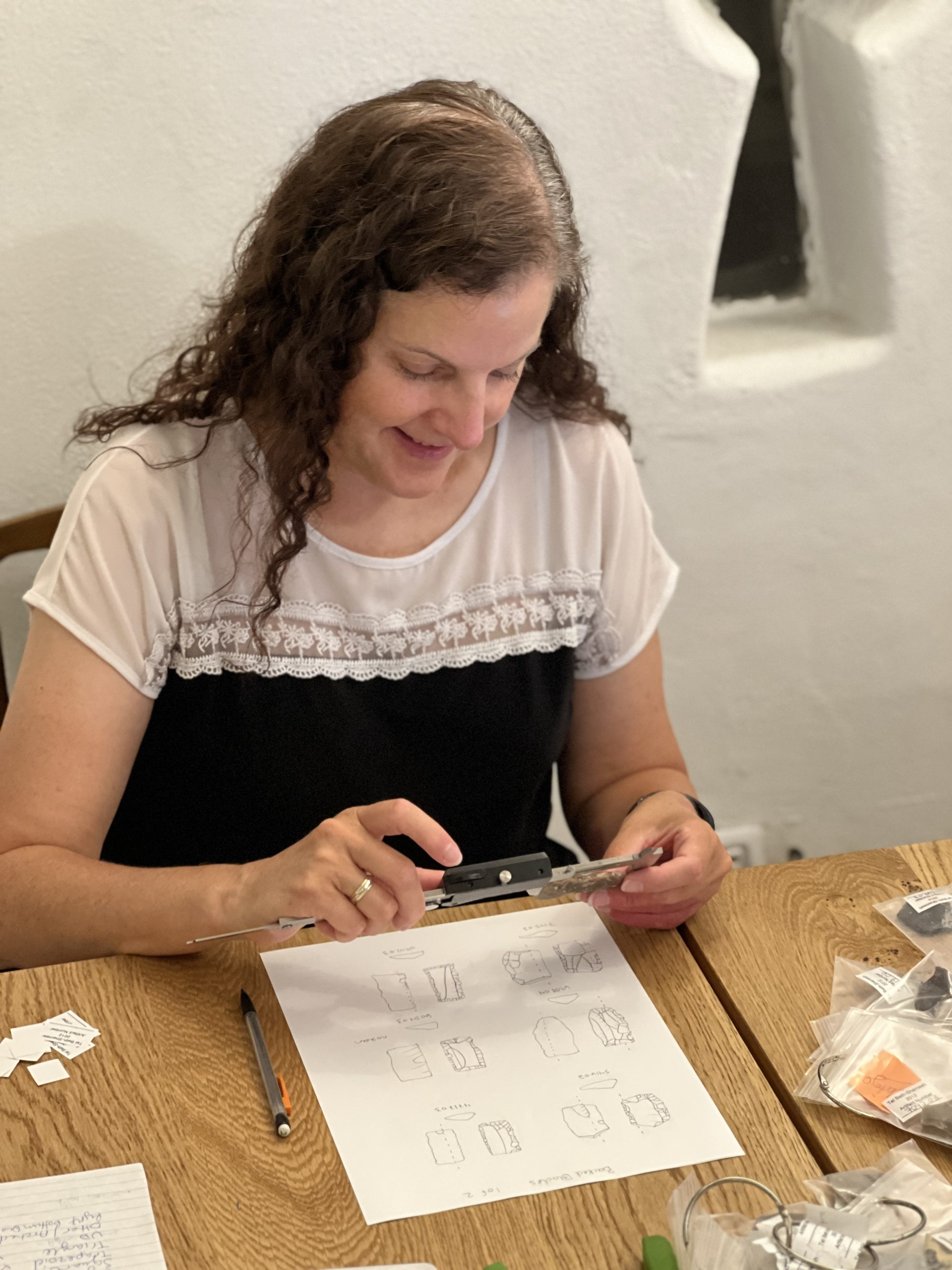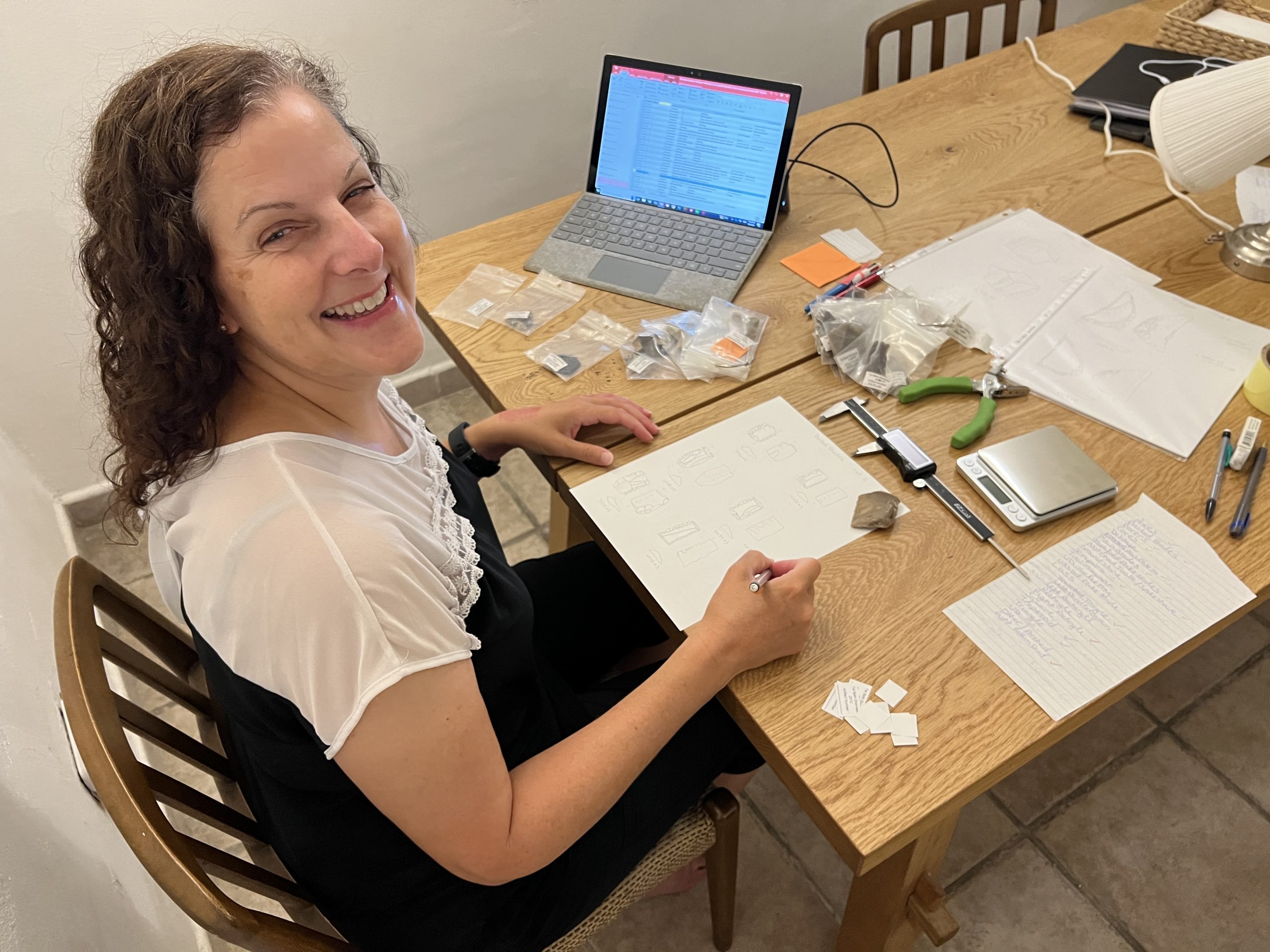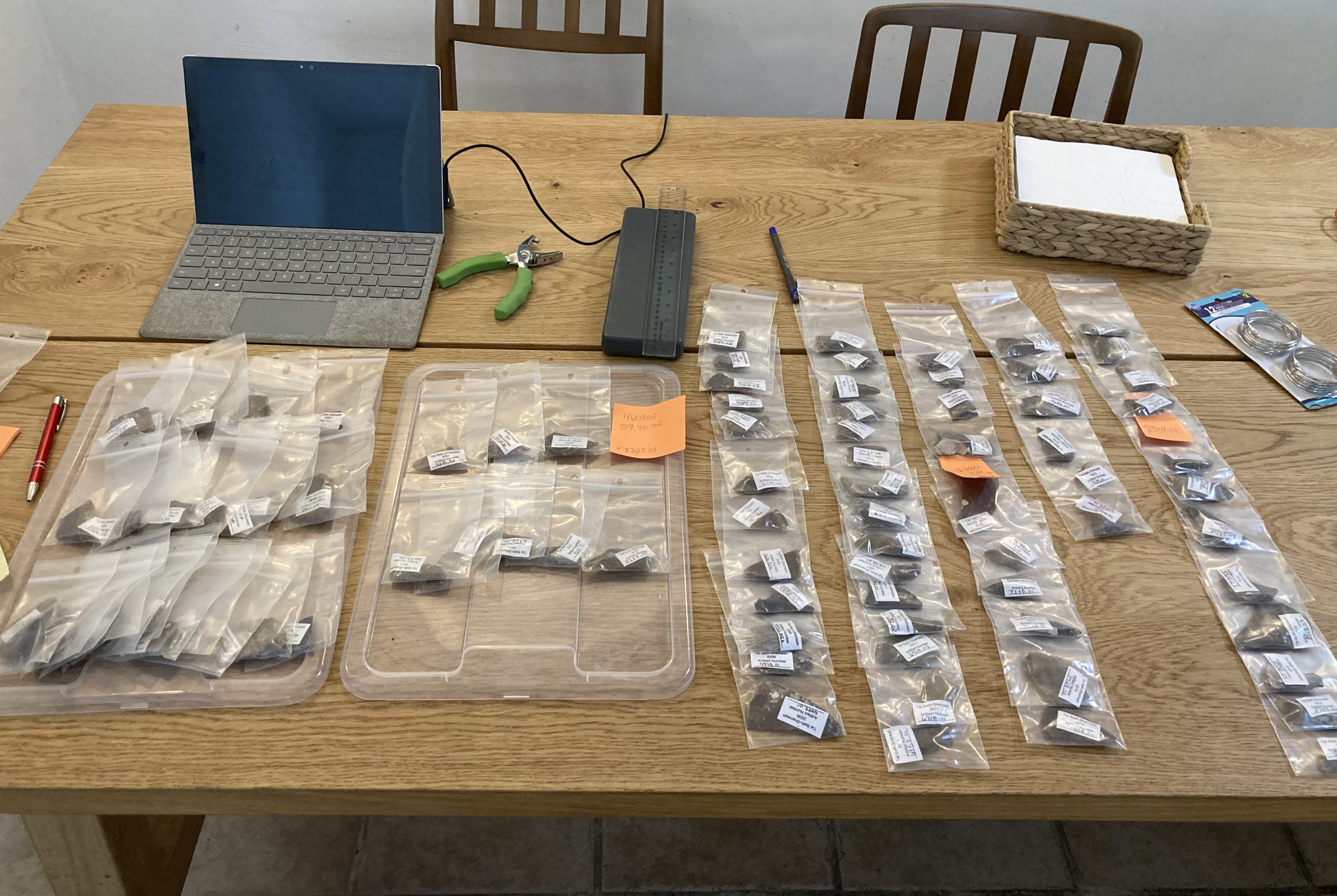We have excavated more than 2700 diagnostic chipped stone artifacts at Tel Beth-Shemesh, making it one of the largest lithic assemblages amassed from a historic period site in the Levant. These specimens include cores and waste flakes (debitage) from tool production, tool blanks or preforms, and finished tools. Thousands more non-diagnostic chips and chunks of high-quality chert were also collected and examined. It was quickly clear that at least some lithic tool production was taking place on site, but a detailed study of the artifacts was needed to understand the manufacturing process and determine if certain tools were locally manufactured and others acquired through trade. Moreover, the chipped stone artifacts came from Middle Bronze II to Iron II contexts, which allowed me to study diachronic change in the chipped stone industry. This was especially exciting because Tel Beth-Shemesh is one of only a handful of sites that was continually occupied through these periods.

